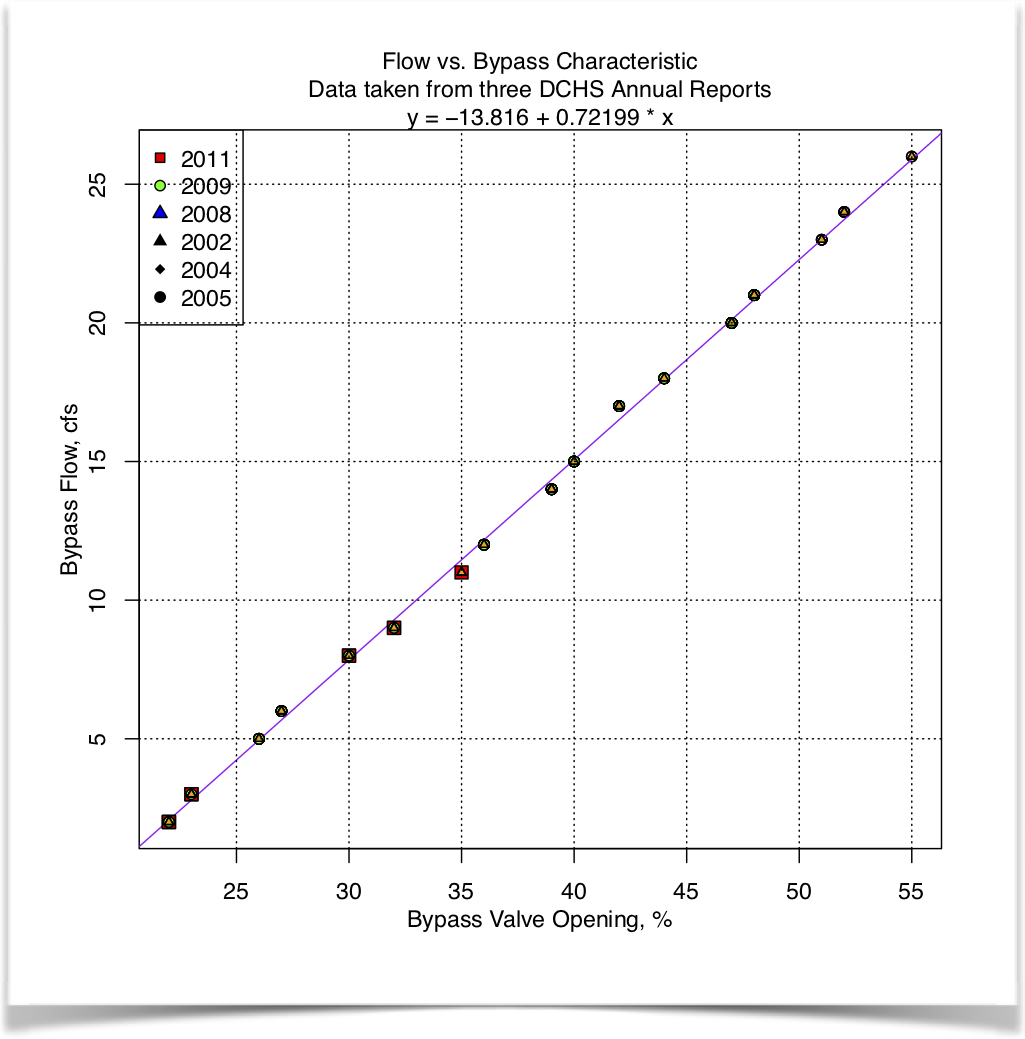
Turbine Bypass Flow
The turbines at the hydroelectric facilities have a bypass flow capability, meaning water from the lake can flow into the tailrace without going through the turbines.
The bypass pipe runs from the unit 2 penstock around the west side of the powerhouse to discharge into the tailrace channel upstream of the tailrace weir. A Polyjet valve controls the flow rate and dissipate energy prior to discharge into the tailrace. See p.4-33 of the Pennsylvania Electric Company, Deep Creek Station Support Document for Permit Application to Appropriate and use Waters of the State, AUGUST 1993
The hydroelectric operator for the Deep Creek Hydroelectric Project is required, as per permit, to keep a minimum flow rate on the Youghiogheny River immediately downstream of the tailrace at 40 cfs. Brookfield monitors the USGS flow gage at Oakland and according to a specified protocol operates a bypass flow to accomplish the 40 cfs minimum flow rate. When the flow at the Oakland USGS gage is less than 26 cfs, Brookfield uses a bypass valve setting to provide the required bypass. The annual reports list the valve setting and the resulting flow. This data was extracted from these reports and used in a linear regression model. The characteristics of the bypass flow are modeled by the following equation, which was arrived at during a period of flow measurements.
Q = -13.816 + 0.722 x V # Regression fit
Q = bypass flow, cfs
V = valve setting, %

Figure 1 - The Flow Through the Bypass Valve.
PLV
First Published: 03/16/2014
Updated: 4/20/2017
Adapted for this website: 1/10/2018